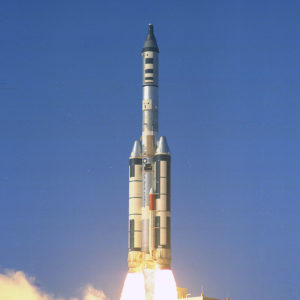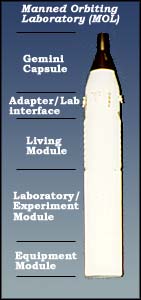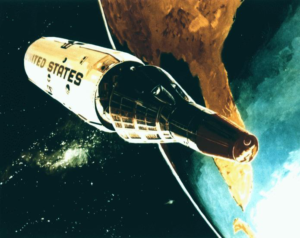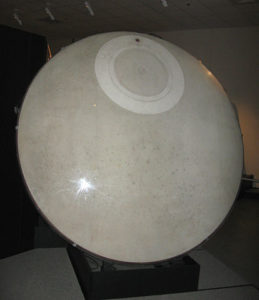50 years ago today, on November 3rd 1966, the United States Air Force launched the 6th Titan III-C booster on a very unique test flight. Sitting atop the powerful launch vehicle was an extension made from a spare Titan I rocket oxidizer tank classified as OPS 0855, built to simulate an orbital laboratory payload, and topping that, the very familiar Gemini spacecraft. This particular spacecraft had flown before, as Gemini 2, back in 1965. This was the first spacecraft to fly more than once since the X-15, and while it was unmanned, it still was fully reused.

The launch of OPS 0855
The mission was simple – Launch the Titan III-C, while on a sub-orbital trajectory, release the Gemini 2 craft to let it re-enter for heat shield testing, and then fire the upper stage to insert the OPS payload and a few smaller test satellites into orbit.
The Gemini craft heat shield test was important here – not because we needed data on the craft itself (we already had 11 out of 12 Gemini flights flown by this time in 1966, but to test a modification to the heat shield to support the Manned Orbiting Laboratory mission.

The planned MOL Configuration on launch.
What was the Manned Orbiting Laboratory? Well, put simply, it was a plan to use the Gemini spacecraft as a crew transport into orbit alongside a military space station which would be used to observe the Soviet Union and other locations of interest, using primarily a camera system that reports suggest could rival that of civilian observation systems developed decades later.

Artistic rendering of MOL in orbit.
For crew access, the MOL Gemini had a hatch cut in the heat shield. This is what the re-entry test was for. The heat shield on any spacecraft simply has to work – any failure of it can easily result in loss of vehicle and crew (as shown tragically in the Columbia disaster in 2003) and the idea of putting a hatch, basically cutting a circular hole in the shield and hoping it will stay sealed, at first glance is a crazy idea. However, it worked, and the Soviets would do a similar thing with their VA crew module of the TKS craft in the 70’s – another failed element of their own manned military space station program.

The Gemini B (Gemini 2) heat shield hatch
I could go into all kinds of details about MOL and Gemini, as well as Titan III-C, but I will hold off for now – I just wanted to provide a bite sized taste of this forgotten moment when it seemed like Gemini would live on in the military. The MOL program would be cancelled in 1969, but not without crews selected and trained, and even launch facilities started at Vandenburg Air Force Base for the future Titan III-M booster planned for operational MOL launches. Even today, after conversion for the failed USAF Shuttle program, and now the Delta IV booster, flame deflection systems from the planned Titan launch pad are shown and in use – artifacts of a history that could have been.
I’ll have more on MOL in the future, but for now, I’ll leave you with a more in depth article, and some related readings. Enjoy!
